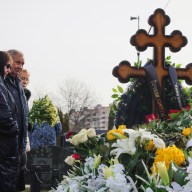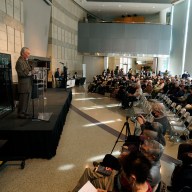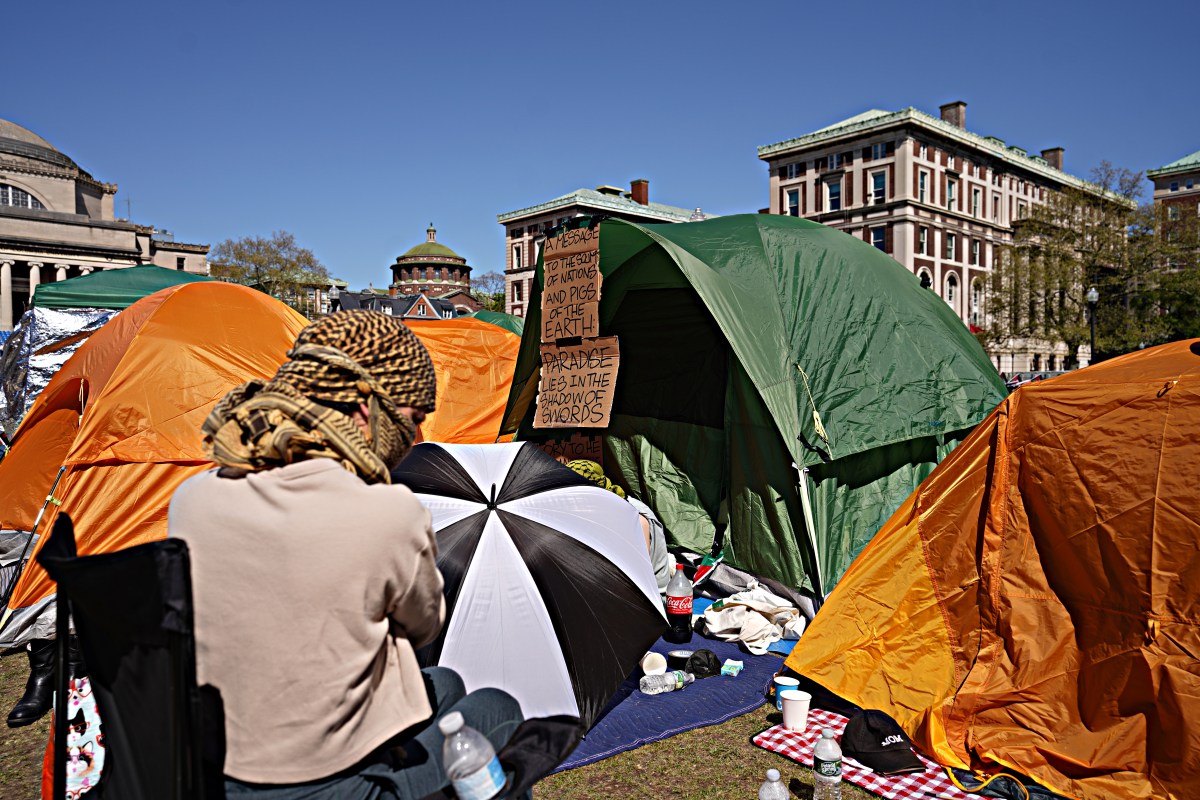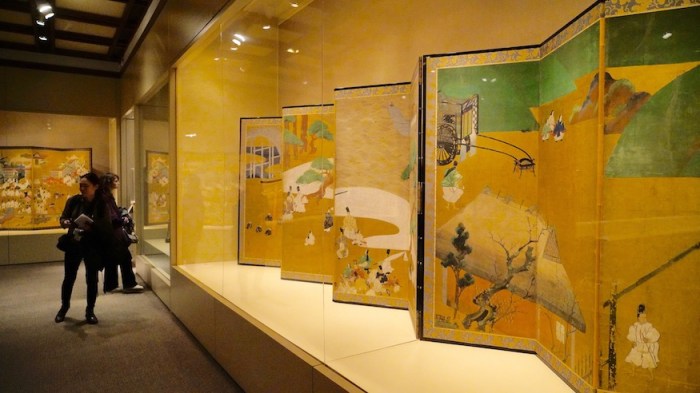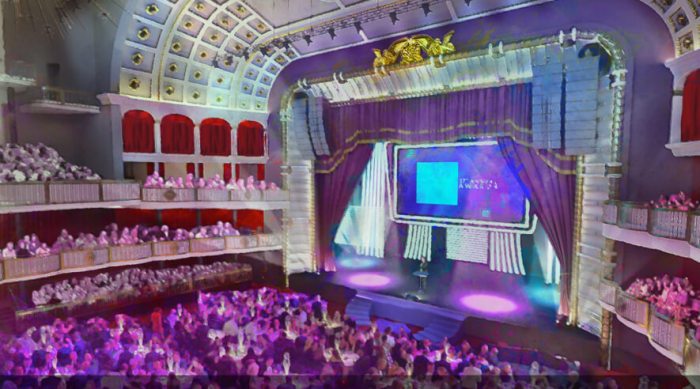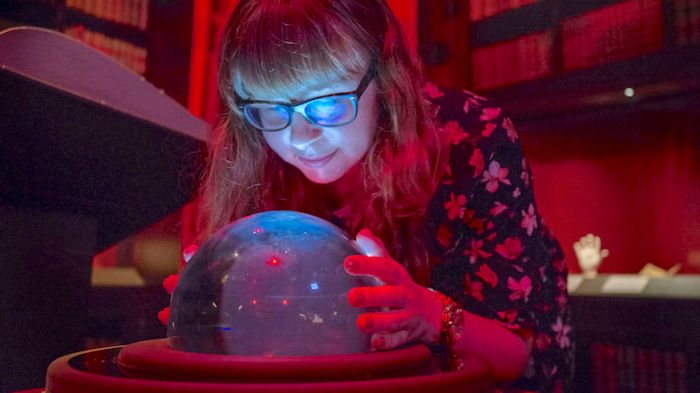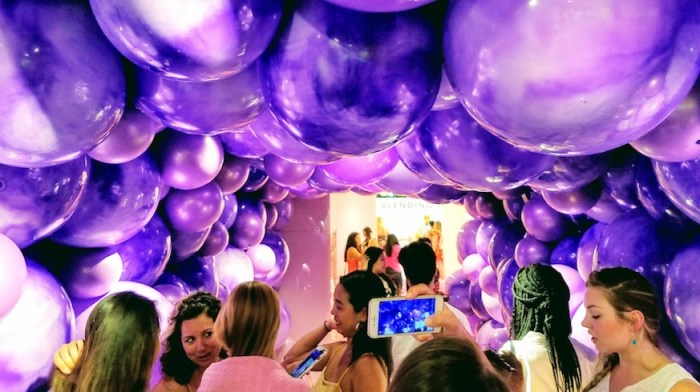You don’t have to be religious to be overcome by the holy spirit of Heavenly Bodies, the Met’s new exhibit about the influence of Catholicism on fashion.
Taking over three halls and the Anna Wintour Costume Institute at the Met’s home on Fifth Avenue and stretching up to the medieval monastery-inspired galleries of the Cloisters, Heavenly Bodies is the largest show the Met has ever mounted.
“In order to see this exhibition,” says Daniel Weiss, president of the Met, “one has to embark on a veritable pilgrimage, which we think is great.”
A show of reverence
A cathedral and a catwalk couldn’t seem more different — until you realize they have everything in common, with a central aisle where the processional takes place, customarily set to music.
With styles and ideas bursting at the seams of runway shows, the designers of famed houses like Alexander McQueen, Valentino and Dior find themselves in elegant grandeur inside the Met’s soaring Byzantine galleries. Blue spotlights shaped to form the high windows of a cathedral illuminate leather, lacy and low-cut gowns inspired by papal vestments — but this is no blasphemous display. The exhibit has the blessing of the New York Archdiocese.
“Think about it for just a moment,” beckons Cardinal Timothy Dolan. “It’s because the Church and the Catholic imagination, the theme of this exhibit, are all about three things: truth, goodness and beauty. That’s why we have great schools and universities, to teach the truth; that’s why we love and serve the poor, to do good; and that’s why we’re into things such as art, poetry, music, liturgy and, yes, even fashion, to thank God for the gift of beauty.”
The Catholic imagination
And there’s plenty of beauty to be had: over 150 pieces of haute couture, each telling the stories of their creators. “Most of the designers featured in the exhibition were raised Catholic,” says curator
Andrew Bolton, who spent two years assembling the show. “And while many of them no longer practice and their relationships to Catholicism vary considerably, most acknowledge a significant influence over their imaginations.”
Catholics live in a world of art and storytelling, he explains, among objects imbued with power like rosary beads and stained glass windows, statues of saints and holy water. “The Catholic imagination is forged by and fueled by stories,” he says. “It operates on a narrative level, which is where its power lies and where its resonance is felt.”
But you don’t need a theology degree to appreciate them. The designers, much like pop culture icons such as Madonna, craft their own narratives imbued with their Catholic experiences. Heavenly Bodies shines brightest when it defies expectation, such as the lineup of playful and daring takes on the nun’s habit by Dolce & Gabbana, Thom Browne and newcomer Cimone. They’re paired with a row of feminine takes on the soutane (the black robe worn by priests) by the likes of Dior, John Galliano and Yves Saint Laurent that are anything but conservative.
A glorious history
Nothing created by these designers compares to the grandeur and pomp of traditional papal vestments. In the Met’s Costume Institute awaits an astonishing collection of over 50 cloaks, robes, shoes, gloves, tiaras and bejeweled mitre on loan from the Vatican’s own sacristy, many of them never before seen outside of Italy.
“It would’ve been dazzling for people to see when people didn’t have television or movies,” says Father James Martin, the in-house chaplain of “The Colbert Report” and consultant on Heavenly Bodies. “That was the way they communicated messages about the Church — it’s really beautiful.”
That all changed with the Second Vatican Council, the conference to move the church into the 21st century held in the mid-1960s, when “the Church consciously decided to let go of some of those accoutrements,” he explains. “Paul VI decided not to get crowned with the triple tiara, and that has continued. And you have someone like Pope Francis who doesn’t even wear the red shoes,” which represent the blood of Catholic martyrs all the way back to Christ. “It’s good; it’s a simplification, and you’re getting closer to Jesus. When you see those triple tiaras, you think of the old line that ‘it’s a long way from the carpenter of Nazareth.’”
As for the haute couture, Martin prefers jeans and a T-shirt when he’s not on the clock. But he appreciates the spirit in which the clothing in Heavenly Bodies was created, likening it to the work of other artists like Michelangelo: “They both have an imagination that’s inspired by the holy spirit. I thought it was beautiful and thought-provoking.”
And do make the trip up to Washington Heights to complete your pilgrimage. The Cloisters are a chance to see the historical garments in the context of the architecture where they would’ve been worn. “To me,” says Bolton, “it’s the pinnacle of the exhibition.”
Heavenly Bodies is on view from May 10 through Oct. 8, 2018 at the Met, 1000 Fifth Ave., and the Met Cloisters, 99 Margaret Corbin Dr. Admission is $25 or pay-what-you-will for New Yorkers; metmuseum.org






